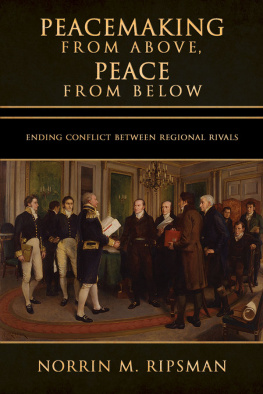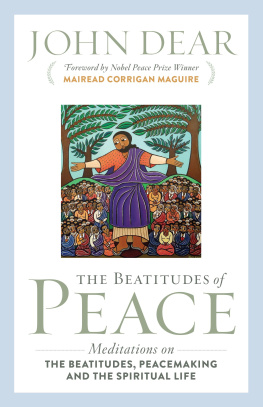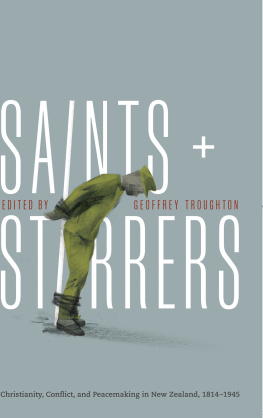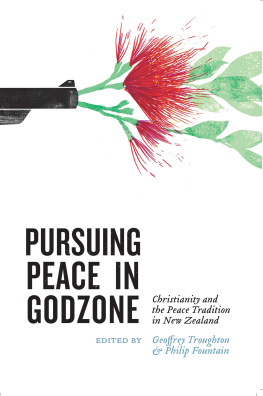Acknowledgments
This book is the product of a two-decade obsession with the dynamics of interstate peacemaking. Beginning with my dissertation at the University of Pennsylvania, I have been troubled by the complexity of Robert Putnams two-level game of international politics and its implications for peacemaking. Rarely do the two game boards align for rival states in order to compel the resolution of conflict. Instead, mutual distrust and insecurity are usually reinforced by domestic hostility toward the adversary, which undermines the prospects for peace and stability. How can peace be achieved and maintained, given this complexity? What roles do states and societies have in making peace and maintaining it?
Inspired by Benny Miller and T. V. Paul, two good friends and mentors, I reach beyond traditional paradigmatic boundaries to investigate these questions, as the theories drawn from paradigmatic approaches are insufficient to explain the complex processes of peacemaking and peace stabilization. Consequently, consistent with eclectic approaches and, in particular, with neoclassical realism, in this book I combine insights and concepts from structural realism, liberalism, and constructivism to generate the explanatory leverage to explain the outbreak and maintenance of peace between regional rivals. Moreover, the book continues my commitment to careful primary source case studies to shed light on important theoretical questions.
Portions of this book were previously published as Top-Down Peacemaking: Why Peace Begins with States and Not Societies, in International Relations Theory and Regional Transformation , edited by T. V. Paul, Cambridge University Press, 2012, and Two Stages of Transition from a Region of War to a Region of Peace: Realist Transition and Liberal Endurance, International Studies Quarterly 49, no. 4 (December 2005).
Many colleagues and friends gave me comments and suggestions on various aspects of this manuscript. I would particularly like to acknowledge Bob Art, the late Yaacov Bar Simantov, Dale Copeland, Oded Haklai, John Hall, Eric Hamilton, Yair Hirschfeld, Pat James, Arie Kacowicz, Korina Kagan, Jack Levy, Michael Lipson, Steven Lobell, Sean Lynn-Jones, David Mares, Benny Miller, Steven Miller, T. V. Paul, Charles Pentland, Vincent Pouliot, Galia Press-Barnathan, Larry Rubin, Jeff Taliaferro, Monica Duffy Toft, and Steve Walt for their useful suggestions. Im particularly grateful to Steven Lobell and Jeff Taliaferro, with whom I have worked closely on numerous projects. Their advice, guidance, and moral support during our biweekly Skype calls have helped this book immensely.
I have also benefitted from feedback on presentations of this work in progress at the Belfer Center for Science and International Affairs at the Harvard Kennedy School, the University of Colorado at Boulder, the School of International Studies at the University of Southern California, Georgia Tech University, Queens University, the University of Haifa, the Hebrew University of Jerusalem, Florida International University, the University of Massachusetts at Lowell, and Northern Illinois University. I am also grateful for the research funding I received for the project from the Social Science and Humanities Research Council and the Fonds de recherche du Qubec: Socit et culture.
Over the years, several excellent research assistants at Concordia University have helped me with this book. I thank Eugenia Yupanqui Aurich, Shaun Cavaliere, Nadine Hajjar, Sandra Helayel, Sebastien Mainville, Shoghig Mikaelian, and Aleksandra Vuldzheva for all their hard work.
It has been wonderful to work with Roger Haydon of Cornell University Press on this book. I value his professionalism and judgment. His production team, including Susan Specter and Katy Meigs, did a superlative job with the copyediting and guiding me through the production process. The editors of the Cornell Studies in Security Affairs series, Bob Art, Robert Jervis, and Steve Walt, also provided excellent guidance, which helped improve the final product.
Finally, I must acknowledge the immense contribution of my family to this book. My parents, Toba and Michael Ripsman, have supported me in all my endeavors and encouraged me to work hard to achieve any goal I set for myself. My beautiful daughters, Shira and Dafna, inspired me to help advance our understanding of the causes of peace in the hope that they may live in a more peaceful world. I appreciate their sacrifice, as they had to live without their Daddy for extended periods, while I conducted research in archives, interviewed diplomats overseas, or buried myself in my basement office writing this book. And I cannot thank my wife, Nathalie, enough. Her contribution to this book is in the methodological advice she gave me, the times she served as a sounding board for half-baked ideas, the moral support she offered when the project moved slowly, her willingness to tolerate long research trips abroad and long periods of writing while locked in my office, and her joy at its completion. I share this book with her, as I share everything in life.
Top-Down Peacemaking, Bottom-Up Peace
Neighboring states wage war far more frequently than other states. This makes sense given that they have frequent interaction and, thus, increased opportunities for conflict. It is also much easier to project force across shorter distances than longer ones, making war more likely within geographically defined regions than across them. For this reason, regional rivalriesgeographically proximate states with a history of war and protracted hostility that participate in a well-recognized regional geopolitical security dynamicaccount for a large percentage of interstate violent conflicts. Resolving regional rivalries, therefore, would reduce the incidence of interstate war and contribute greatly to international stability. The central focus of this book is how to promote peacemaking between regional rivals and how to sustain peace agreements reached between them.
What makes regional rivals with a history of mistrust and violent conflict make peace? Why do some states with intense regional rivalries negotiate peace treaties to end their conflict? How can third parties, both states and international institutions, promote peacemaking between regional rivals? Why do some peace treaties between regional rivals endure and transform relations between the former enemies, while others are only short lived? These are questions of fundamental theoretical importance. Presently, they are also of great practical importance as the international community seeks to forge lasting peace and stability in South Asia and the volatile Middle East, regions with longstanding rivalries that contain the potential to escalate to the nuclear level.
The international relations theory literature suggests two possible paths to peace between regional rivals. A bottom-up approach, drawn largely from liberal and constructivist theories, suggests that peace could result from societal pressures to end a destructive and economically irrational rivalry. In this model, for self-interested or normative reasons, key societal actors or the public at large in belligerent societies drive the process of peacemaking, compelling their reluctant states to de-escalate the conflict and, ultimately, resolve it. This bottom-up approach would then expect that once societal attitudes are changed and states overcome their mutual hostility the peace settlement is likely to endure.












